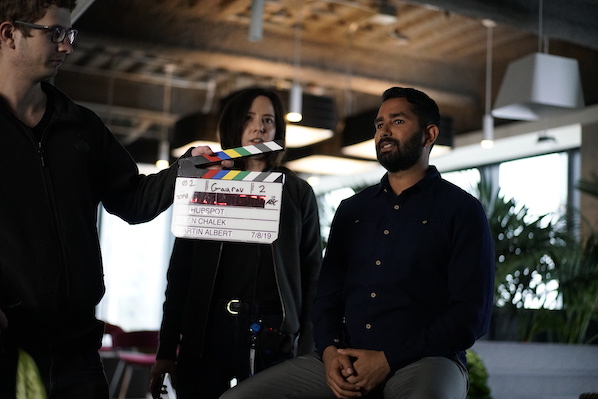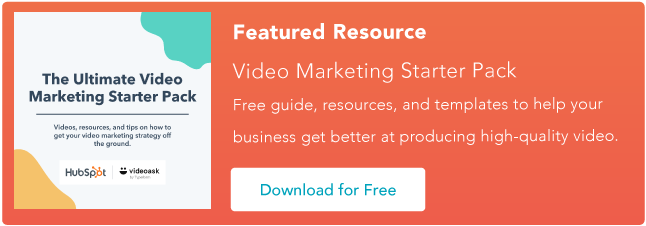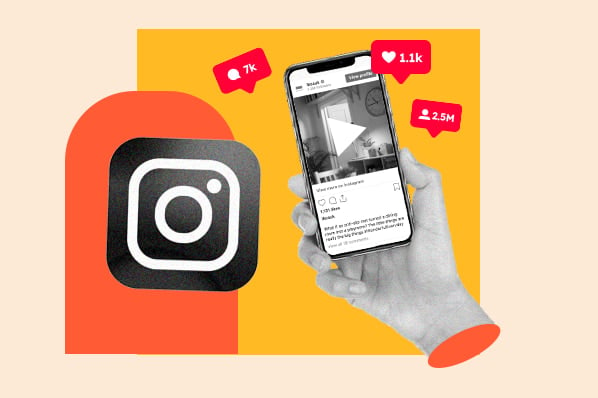Case Study One: Use Long-form Video to Explain Complex Topics
Diego Santos, Marketing Manager at HubSpot, has used long-form video in his Facebook Live educational video series #MartesEnVivo, as well as in his re-branded YouTube series #UnMejorMarketing for HubSpot's Spanish-speaking audience.
Santos told me — "Long-form videos can be a great way for your brand to explain complex topics and develop educational and thought leadership content. Most companies opt for shorter content forms, so longer videos can help you to stand out from competitors and position yourself and your brand as a real expert."
Santos adds, "Not everyone is willing to watch a 10min+ detailed video, so you need to focus on finding the right audience and optimizing their engagement, rather than looking for a big reach of people that will watch for a few seconds but then drop off."
Of course, this is easier said than done. To help you figure out how to find the right audience, Santos suggests you:
- Create serialized content, so an audience can learn to expect a certain topic from your brand at the same time, and on the same platform, consistently.
- Publish on platforms where videos can live longer, such as YouTube or your own blog.
- Add value throughout the video, and don't extend the video unnecessarily.
- Do keyword research and add captions to help the video's discoverability.
For instance, take a look at this five minute, 41 second YouTube video Santos and his team put together to explore the topic of buyer personas:
While the video is too long to attract a large audience, its content will match a searcher's intent if they're looking for in-depth information on buyer personas. Additionally, they've used keyword research to optimize the post for YouTube search.
Case Study Two: Use Long-form Video to Create a High-quality Brand Campaign
Last quarter, Kyle Denhoff and his team launched Advertising, A Look Behind the Screens. There are four videos, about three minutes each, that include interviews with experts from LinkedIn, Google, Facebook, and HubSpot.
To explore why they chose to use longer-form video for the campaign, I spoke with Denhoff. He told me: "There is a constant debate within marketing teams about where to invest. Should you invest in brand marketing or performance marketing? Historically, companies that invest heavily in brand marketing produce beautiful videos to tell their story. Then, they use advertising to promote videos to reach new audiences."
He adds, "Alternatively, on the performance side, brands focus on creating direct response offers, such as templates, guides, reports, and infographics that provide an audience immediate value in the form of education."
"When creating Advertising, a Look Behind the Screens we said, 'Why can't we provide a direct response content offer with the production value of a brand campaign?'"
Denhoff told me, "We decided to use video as a format to tell a unified story across multiple brands. Partnering with Google, Facebook, and LinkedIn, we felt that a minimal and approachable video style would allow us to unify multiple brands under a single creative concept. Overall, we felt high-quality video would help us portray a level of professionalism and trust."
Undoubtedly, long-form video provides some unique benefits to a marketing campaign. First, it enables your brand to tell the full story, especially when interviewing experts in the industry.
Second, it allows your brand to prove its educational value more than short-form content. With three to four minutes minimum, you can teach your audience much more about a concept than you could in 30 seconds.
Of course, there's a trade-off to long-form video. You likely need higher-quality video to keep your audience engaged if it's a longer video, compared to a quick 20-to-30 second clip that can seem a little more improvised and casual. Additionally, you need to make every second count, or you'll quickly lose your audience's attention.
Denhoff adds, "Using video, we could focus on the people at each company instead of various graphics or illustrations. This allowed our experts to share their unique expertise and personality with our audience, and made these technology brands seem more approachable."
"Additionally, we felt that video allowed us to share a ton of information in a shorter period of time compared to other content formats such as a long-form blog post. We were able to provide marketers with tactical advice about digital advertising, across all platforms, in just 15-minutes."
Case Study Three: Choose the Right Platform to Ensure Your Long-form Video is Well-received
Kelly Hendrickson, HubSpot's Social Media Manager, uses both long and short-form video in her social media campaigns, depending on the platform and the goal. She told me, "Longer video is ideal for raising brand awareness in a memorable and impactful way because many times, we are creating a narrative."
"When you tell a story, you connect with your audience in a deeper way than just facts and figures. You connect on a message and on things that are simply more human, whether it be emotion or humor. That is why someone remembers your brand."
Of course, you'll want to consider whether long-form video is appropriate depending on the platform and the audience. To combat this issue, Hendrickson suggests: "Logistically, if you are looking to tell a longer story on a platform like Instagram, you would look to IGTV, since a typical post has restrictions on the length of video that can be played."
Additionally, if you do choose IGTV as an option, Hendrickson told me — "A great way to get IGTV into people's feeds is to create an IGTV preview on the wall. This is where your audience will see the first minute of your IGTV as if it was any other piece of content on Instagram. When the minute is up, a CTA appears to 'Keep Watching.' It's a great way to give people a taste of your narrative, and then empower them to stick with you a little longer."
Ultimately, with longer video, you're asking more of your audience (in terms of time and attention span). That's okay, as long as you deliver enough value to make the time-investment worthwhile, and as long as you feel you have a unique story to tell.
Video Marketing





![The best social media platforms for video content in 2025 [consumer data]](https://53.fs1.hubspotusercontent-na1.net/hubfs/53/img-1-20250516-9399498.webp)


![3 Short-Form Video Trends Marketers Should Watch in 2025 [New Data]](https://53.fs1.hubspotusercontent-na1.net/hubfs/53/ft-short-form-video-trends.webp)
![Are In-Stream Video Ads Worth the Investment? [Benefits & Best Practices for Marketers]](https://53.fs1.hubspotusercontent-na1.net/hubfs/53/in-stream-video-ads-1-20250314-6407067.webp)
![45 Video Marketing Statistics for 2025 [New Data]](https://53.fs1.hubspotusercontent-na1.net/hubfs/53/video-marketing-statistics-1-20250227-6425117.webp)
![Why You Should Leverage Interactive Videos [Data from 500+ Marketers]](https://53.fs1.hubspotusercontent-na1.net/hubfs/53/interactive-video-1-20250216-406926.webp)
![Silent But Mighty: How Soundless Videos Are Winning Social Media [+ 2025 Data]](https://53.fs1.hubspotusercontent-na1.net/hubfs/53/Soundless%20Videos%20We%20Love.png)